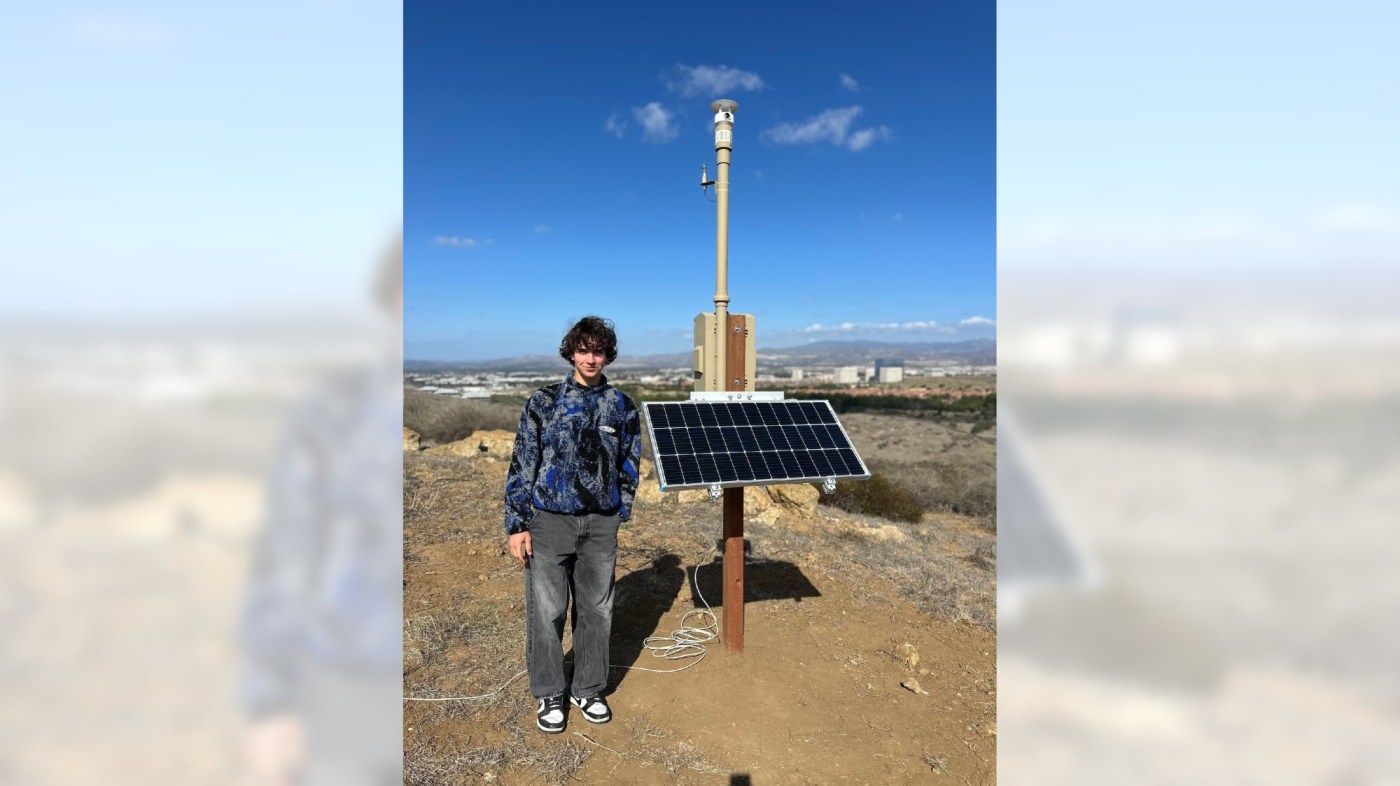A 17-year-old inventor from Newport Beach saw years of hard work come to fruition after he deployed his AI-driven early wildfire detection system near Irvine for the first time on Feb. 10.
Ryan Honary, a high school student and founder of SensoRy AI, has been working on the project since fifth grade after seeing the devastation of the 2018 Camp fire, which killed 85 people and destroyed over 18,000 structures in northern California. Working alongside the City of Irvine and the Orange County Fire Authority, Honary deployed the first permanent detector to be tested alongside the Highway 133 corridor between Laguna Beach and Irvine.
“It’s almost like a dream come true,” said Honary. “My product is finally being deployed and I’m hoping that my network will be successful in detecting these fires early on and saving the lives of not only just people but animals and our environment.”

The detector is a wireless network that uses sensors, including infrared and gas, to detect the three main signatures of a fire — flame, smoke and heat. An AI-based approach helps increase detection accuracy and reduce the number of false alarms. Each detector can detect a fire over 1,200 feet away from the line of sight and is designed to identify very small fires at their early stages when the flames are less than three to four feet. Once a fire is detected, the system can instantly notify firefighters of its location and direction through text, email and a web application.
Honary said the location was selected by partnering agencies for various reasons: the area is in a wildland-urban interface where many homes encroach into flammable brush and vegetation, there is high-voltage equipment, including power lines, and there is an increased risk of cars colliding and starting fires, which he says has happened multiple times along that road.
One of the biggest reasons is the geography of the Highway 133 corridor, a major fire corridor that creates “wind funnels” and causes wind speeds to increase as air is forced through narrow canyons and valleys. With just a simple spark and ignition, the fire can grow rapidly and lead to devastating results as recently seen with the Los Angeles County wildfires.
“The best way to keep from having these large fires is a rapid initial attack. If he has sensor systems that can alert us to a fire seconds or minutes sooner, that’s a success,” said Orange County Fire Authority Chief Brian Fennessy. “We support any technology that can provide us with a rapid response.”
Honary plans to deploy five more detectors in March, followed by an additional 25 by September along the hillsides down the Highway 133 corridor.
The teen’s invention has evolved from the sensor system he initially developed years ago, said Fennessy. In the aftermath of the 2020 Silverado and Blue Ridge fires, there was an interest in early detection and rapid response technology. The fire chief began to mentor Honary and connected him with resources, including a fire behavior analyst, after he learned about his project in a news article and felt “fascinated” and “intrigued” with how far along he was.
A different AI system in Orange County proved itself for the first time late last year. In January, the OCFA announced that the University of California San Diego’s ALERTCalifornia camera network’s AI alerted the OCFA of an “anomaly” seen on video footage around 2 a.m. on Dec. 4. The network has several cameras located in wildfire-prone spots around Southern California.
The anomaly turned out to be a vegetation fire in Black Star Canyon, east of Irvine Lake. This was the first fire locally that was located exclusively by AI, the OCFA said. Without it, the blaze could have spread significantly before anyone noticed it, the agency added.
In 2021, Honary formed a partnership with the Irvine Ranch Conservancy, a nonprofit that manages 50,000 acres of parks and wildlands in fire-prone areas of Orange County. The collaboration allowed him to pilot his project and has been credited as the main source of funding. The organization has publicly donated $250,000 for broader network testing.
He was also awarded a research grant in 2020 from the Office of Naval Research, which helped form his startup SensoRy AI. The company has received multiple rounds of funding since, for continued research and development, according to the company.
Honary plans to continue working on the product for the foreseeable future and hopes the solution can be used not just in California, but other states and even countries.





